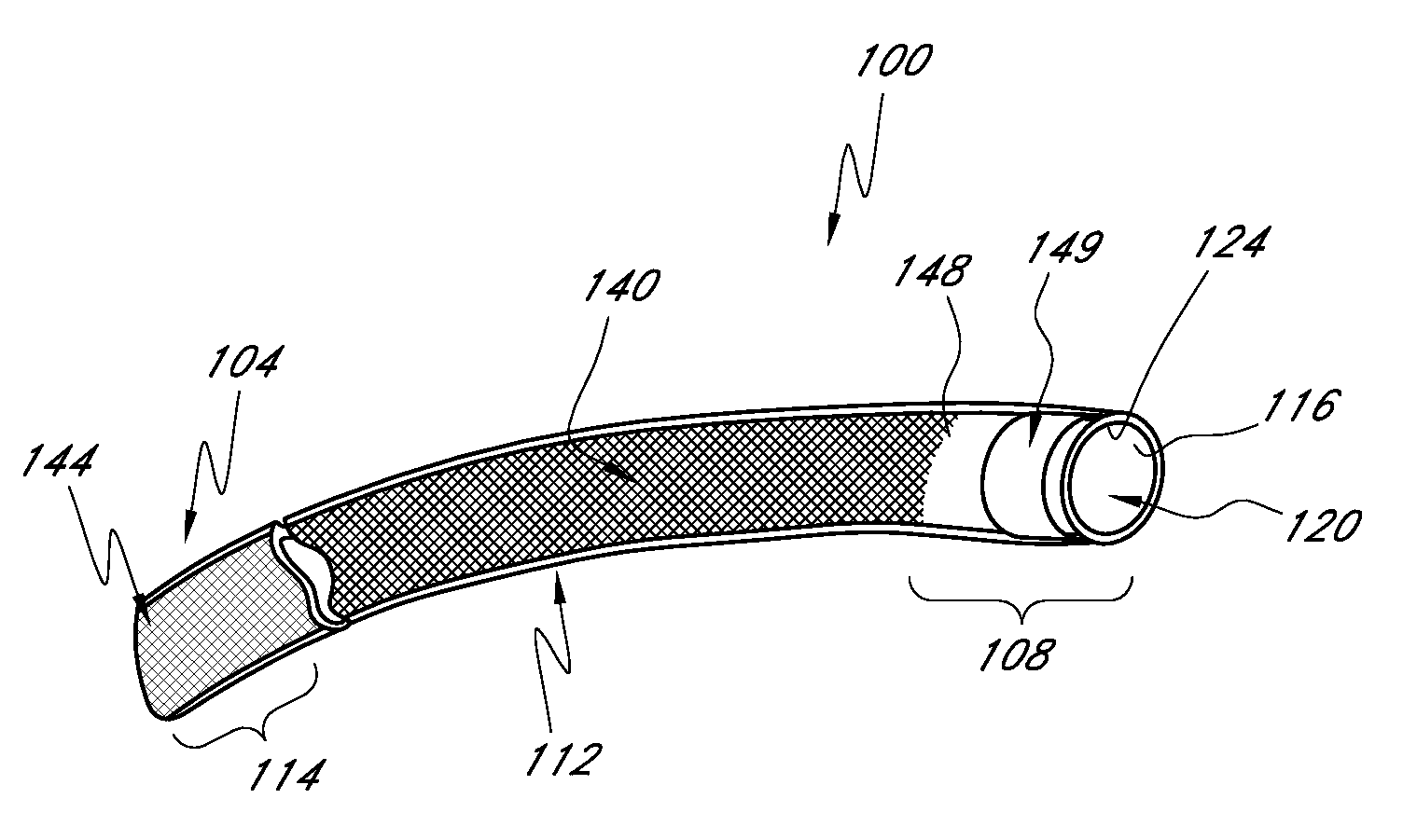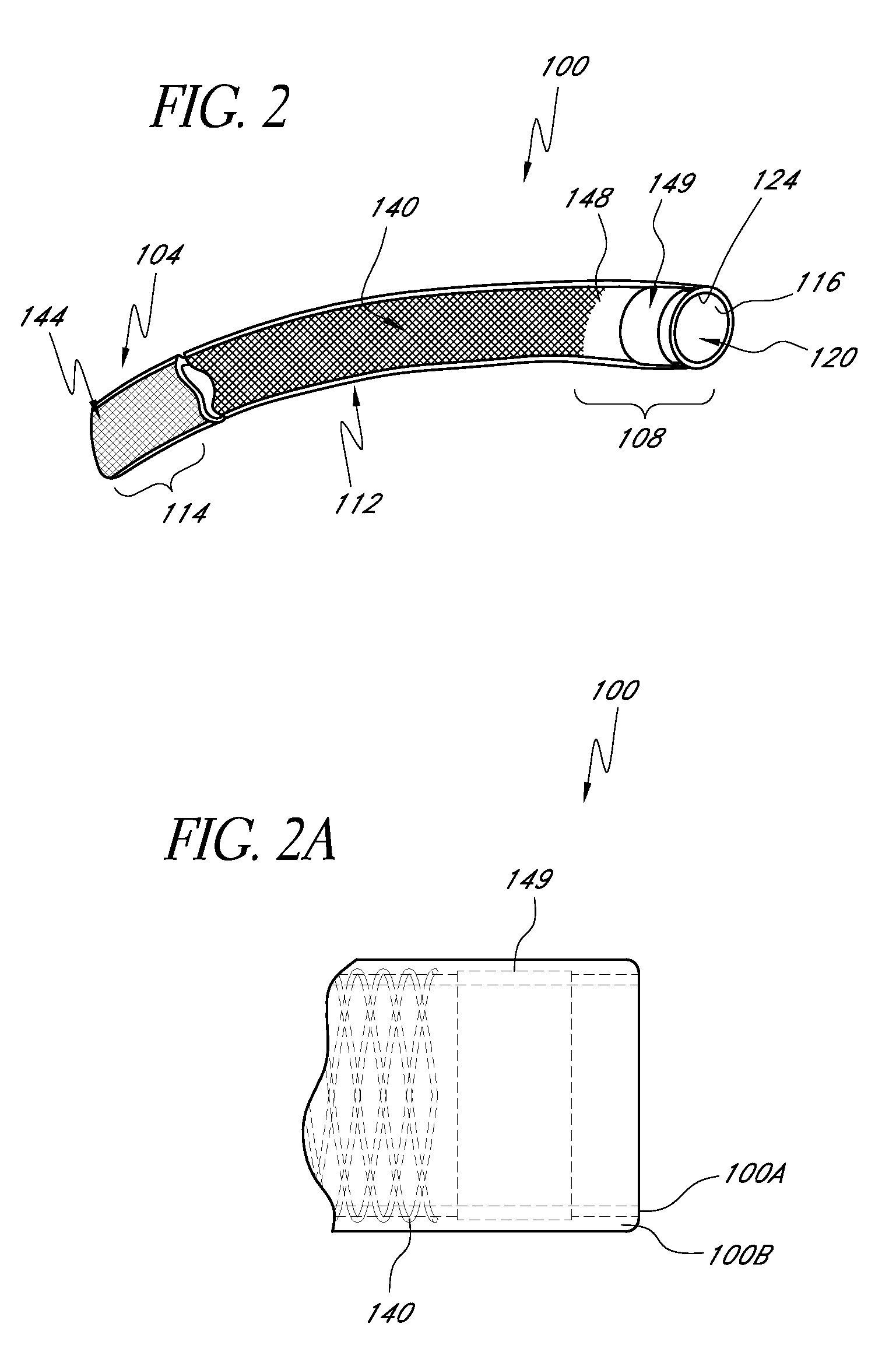Vascular access system
a technology of vascular access and access graft, which is applied in the direction of catheters, suction devices, other medical devices, etc., can solve the problems of discomfort, increased risk of bleeding and infection, and inability to direct anastomosis in all patients, and achieves the patency rate of eptfe access grafts that is not satisfactory
- Summary
- Abstract
- Description
- Claims
- Application Information
AI Technical Summary
Benefits of technology
Problems solved by technology
Method used
Image
Examples
embodiment 4
[0068]FIG. 8 shows a general trend to lower attachment forces for Embodiment 4 compared to other embodiments. Embodiment 4 had lower values for the height and the length of the barb 248. Also, FIG. 8 shows that a lower pic count of the braided structure of the catheter can result in a significantly lower attachment force compared to a higher pic count arrangement, where the connector has two barbs. Lowering the attachment force is desirable in some embodiments to provide faster and easier assembling of a vascular access system in-situ for the clinician.
embodiment 2
[0069]FIG. 7 shows that for the embodiments described in the table above, retention force (e.g., the force needed to disconnect the catheter 100 from the connector 200) was not highly dependent on pic count for the embodiments of the connector studied. Although there is an increase in retention force for Embodiment 2 compared to the other embodiments, all four embodiments had relatively high retention forces compared to an engagement mechanism including a connector with a single barb engaged with a catheter having a braided structure.
[0070]Also, the performance of the braided structure 140 can relate to the number of wires incorporated into the weave. In some embodiments, the braided structure 140 includes about forty-eight braided members 152. Other numbers of braided members 152 can be provided, however. For example, in one embodiment, twenty-four braided members 152 can be provided. Fewer wires provide less crush and kink resistance. More wires provide greater resistance in the b...
PUM
 Login to View More
Login to View More Abstract
Description
Claims
Application Information
 Login to View More
Login to View More - R&D
- Intellectual Property
- Life Sciences
- Materials
- Tech Scout
- Unparalleled Data Quality
- Higher Quality Content
- 60% Fewer Hallucinations
Browse by: Latest US Patents, China's latest patents, Technical Efficacy Thesaurus, Application Domain, Technology Topic, Popular Technical Reports.
© 2025 PatSnap. All rights reserved.Legal|Privacy policy|Modern Slavery Act Transparency Statement|Sitemap|About US| Contact US: help@patsnap.com



